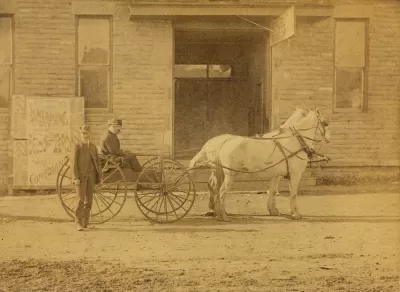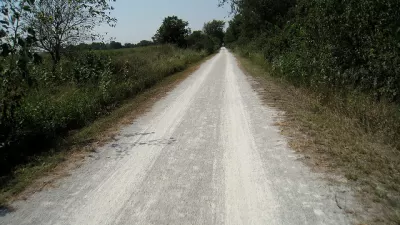A recent study discovered that towns and cities around the country had removed the pavement on thousands of roads in the last five years.

Aarian Marshall reports on a trend among cash-strapped towns: un-paving roads. According to Marshall, "rural areas all over the country are embracing this kind of strategic retreat." In fact, "Transportation agencies in at least 27 states have unpaved roads, according to a new report from the National Highway Cooperative Highway Research program."
Marshall's exploration of the trend centers on the city of Montpellier, Vermont, which is at the leading edge of the ongoing transportation budget experiment. The results of the experiment are still playing themselves out. For instance, unintended consequences of un-paving might include drivers switching from fuel-efficient cars, like a Prius, to a more durable sports utility vehicle.
However, the experiment is taking a scientific approach. "There are serious engineers and scientists—entire academic institutes, even—who study how to un-pave in smart ways. Crews can even tamp down dust problems by regularly applying water-absorbing calcium chloride, organic petroleum, and vegetable oils and animal fats," reports Marshall.
FULL STORY: Cash-Strapped Towns Are Un-Paving Roads They Can’t Afford to Fix

Maui's Vacation Rental Debate Turns Ugly
Verbal attacks, misinformation campaigns and fistfights plague a high-stakes debate to convert thousands of vacation rentals into long-term housing.

Planetizen Federal Action Tracker
A weekly monitor of how Trump’s orders and actions are impacting planners and planning in America.

San Francisco Suspends Traffic Calming Amidst Record Deaths
Citing “a challenging fiscal landscape,” the city will cease the program on the heels of 42 traffic deaths, including 24 pedestrians.

Defunct Pittsburgh Power Plant to Become Residential Tower
A decommissioned steam heat plant will be redeveloped into almost 100 affordable housing units.

Trump Prompts Restructuring of Transportation Research Board in “Unprecedented Overreach”
The TRB has eliminated more than half of its committees including those focused on climate, equity, and cities.

Amtrak Rolls Out New Orleans to Alabama “Mardi Gras” Train
The new service will operate morning and evening departures between Mobile and New Orleans.
Urban Design for Planners 1: Software Tools
This six-course series explores essential urban design concepts using open source software and equips planners with the tools they need to participate fully in the urban design process.
Planning for Universal Design
Learn the tools for implementing Universal Design in planning regulations.
Heyer Gruel & Associates PA
JM Goldson LLC
Custer County Colorado
City of Camden Redevelopment Agency
City of Astoria
Transportation Research & Education Center (TREC) at Portland State University
Jefferson Parish Government
Camden Redevelopment Agency
City of Claremont





























